The Importance of Creating a Bee-Friendly Garden
Bees play a crucial role in our network, pollinating about 80% of flowering plants and helping produce one-third of the food we consume. Unfortunately, bee populations have declined by nearly 30% in recent years due to habitat loss, pesticide use, and climate change. By creating a bee-friendly garden, you’re not just helping these important pollinators survive—you’re also supporting biodiversity and food security for future generations. Your garden becomes part of a wider network of habitats that allow bees to thrive, creating corridors of nourishment across urban and suburban landscapes. Even a small container garden on a balcony can make a important difference when combined with other pollinator-friendly spaces in your community. Plus, a garden that attracts bees will naturally have more flowers, fruits, and vegetables, making your outdoor space more beautiful and productive.
Choosing the Right Bee-Attracting Flowers for Your Garden
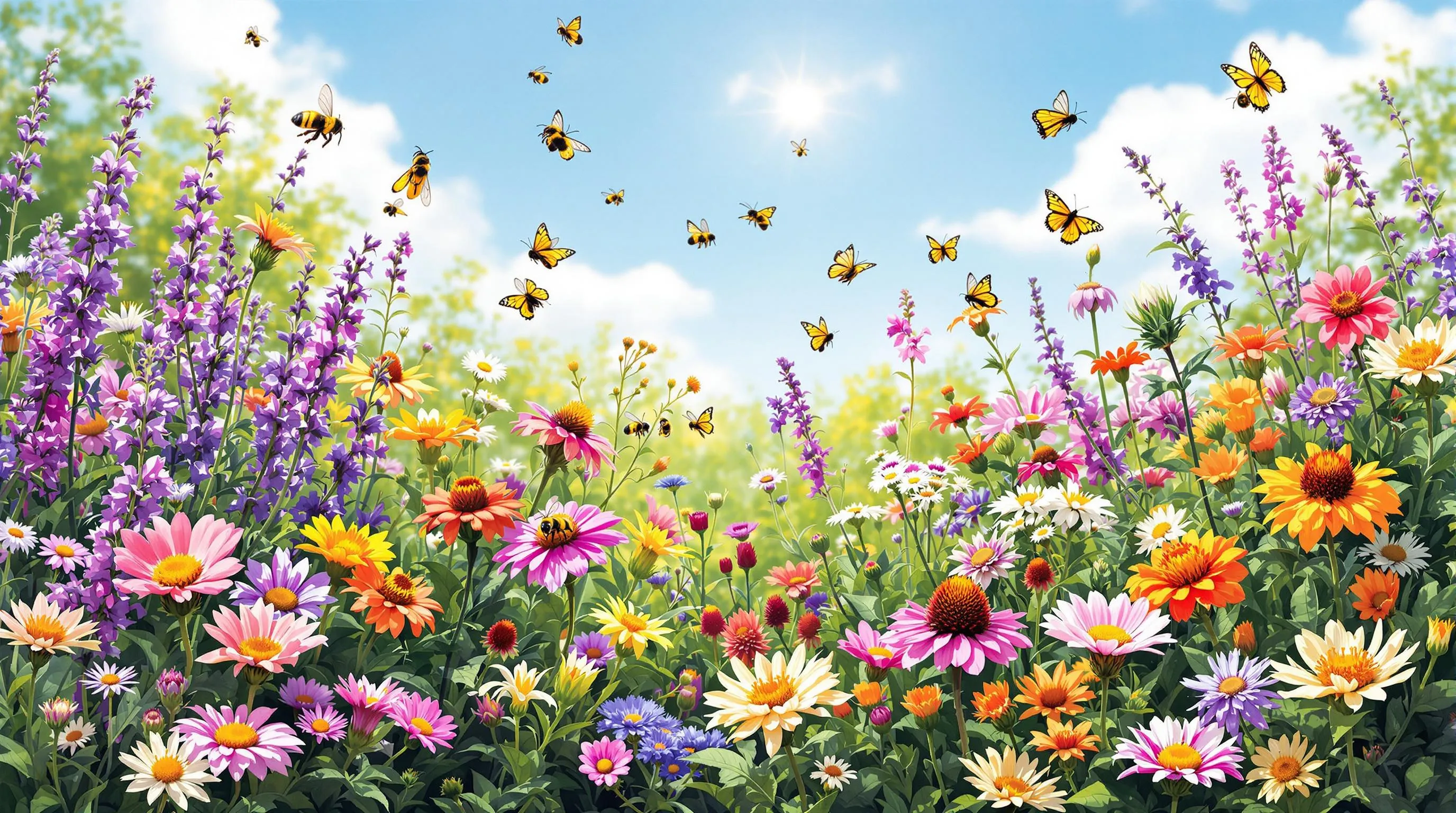
Selecting the right flowers is crucial for creating a thriving bee garden. Bees are attracted to exact plant characteristics and need continuous blooming throughout the growing season to ensure a reliable food source. When planning your garden, aim for a succession of flowers that provide nectar and pollen from early spring through late fall.
Early Spring Bloomers for Bees
Early spring is a critical time for bees emerging from winter hibernation. Plant crocus, snowdrops, and winter aconite as they’re among the first to bloom when temperatures begin to rise. Pussy willow and hazel provide essential early-season pollen, while flowering fruit trees like cherry, apple, and plum offer abundant nectar sources. Don’t forget about spring-flowering bulbs such as grape hyacinth, allium, and bluebells that provide rich nectar rewards. Native wildflowers like spring beauty and bloodroot are especially valuable to native bee species that have co-evolved with these plants for thousands of years.
Summer Flowering Plants Bees Love
Summer offers peak blooming season with countless bee-friendly options. Lavender, borage, and bee balm are particularly attractive to a wide variety of bee species with their abundant nectar production. Incorporate herbs like thyme, oregano, and mint, allowing some to flower for additional bee forage. Native plants such as coneflower, black-eyed Susan, and sunflowers provide both pollen and nectar while supporting native bee populations. Create diverse plantings with different flower shapes to accommodate various bee tongue lengths—long-tongued bumblebees prefer tubular flowers like foxglove, while short-tongued mining bees prefer open-faced blooms like cosmos and zinnias.
Fall Blooms to Support Late-Season Pollinators
Fall-blooming plants are essential for bees preparing for winter. Goldenrod and asters provide crucial late-season nutrition with their abundant nectar and pollen. Sedum varieties like ‘Autumn Joy’ offer landing-pad type flowers that support multiple bee species simultaneously. Plant late-flowering herbs such as Russian sage and anise hyssop that continue blooming until frost. Consider sneezeweed, Joe-Pye weed, and ironweed for height and substantial nectar sources in the autumn garden. These late-season bloomers help bees build up their honey stores for winter survival and support migrating species like monarch butterflies that benefit from the same nectar sources.
Creating a Bee Watering Station: Simple DIY Ideas
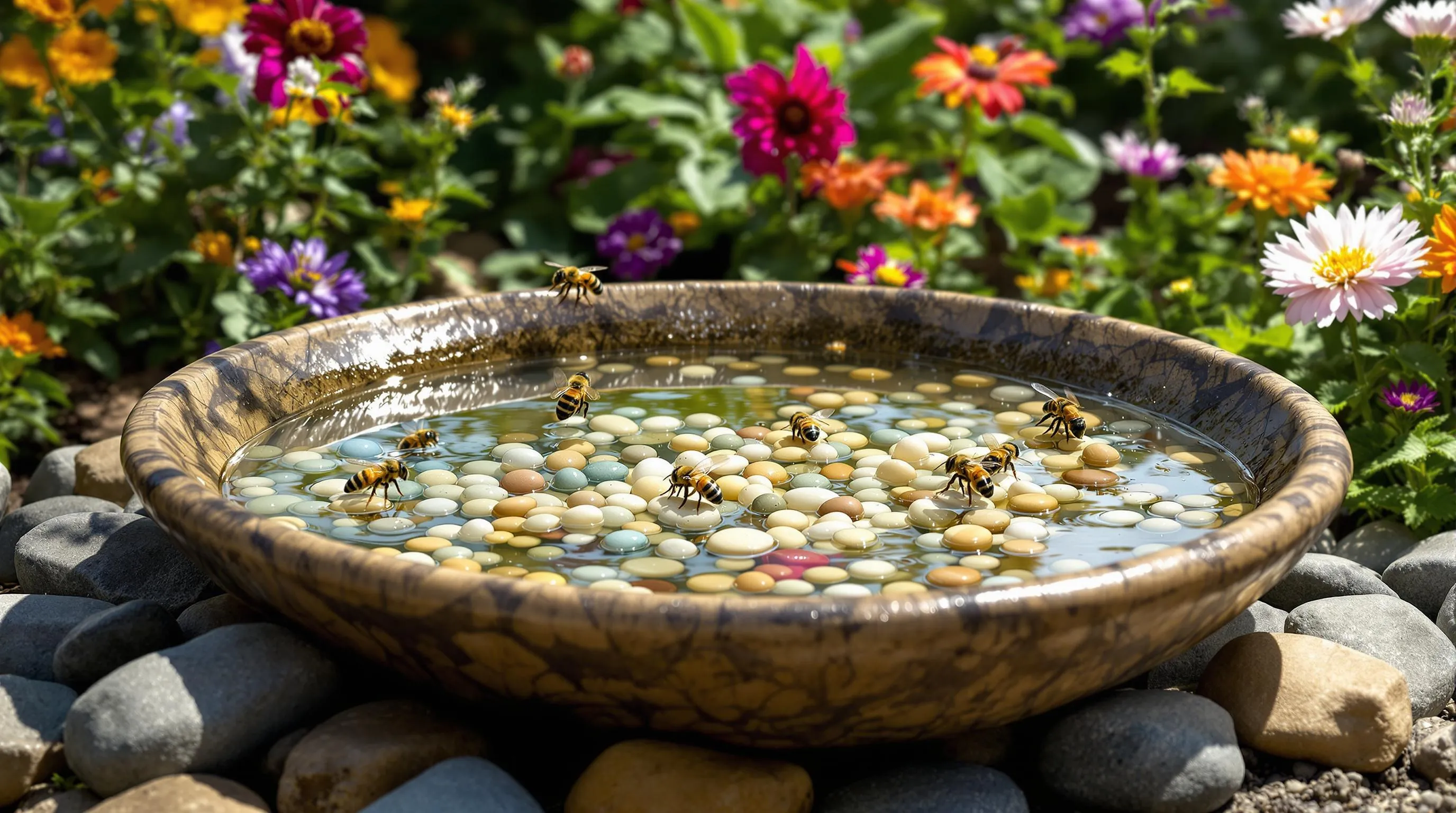
Bees need water just as much as they need nectar and pollen, especially during hot summer months. Creating a dedicated bee watering station helps prevent drowning while giving these important pollinators a safe place to hydrate. You can create an effective bee watering station using items you already have at home. Place marbles, pebbles, or wine corks in a shallow dish or bird bath to create landing spots for bees to perch while drinking. Position your watering station in a shady spot to prevent rapid evaporation and keep it consistently filled with fresh water. For added attraction, add a pinch of sea salt to provide beneficial minerals that bees need. Remember to place your watering station near your flowering plants but away from seating areas to avoid unwanted encounters. Maintaining your bee watering station requires minimal effort—simply refill it regularly and clean it weekly to prevent mosquito breeding and algae growth.
Building Bee Hotels: Shelter Ideas for Solitary Bees
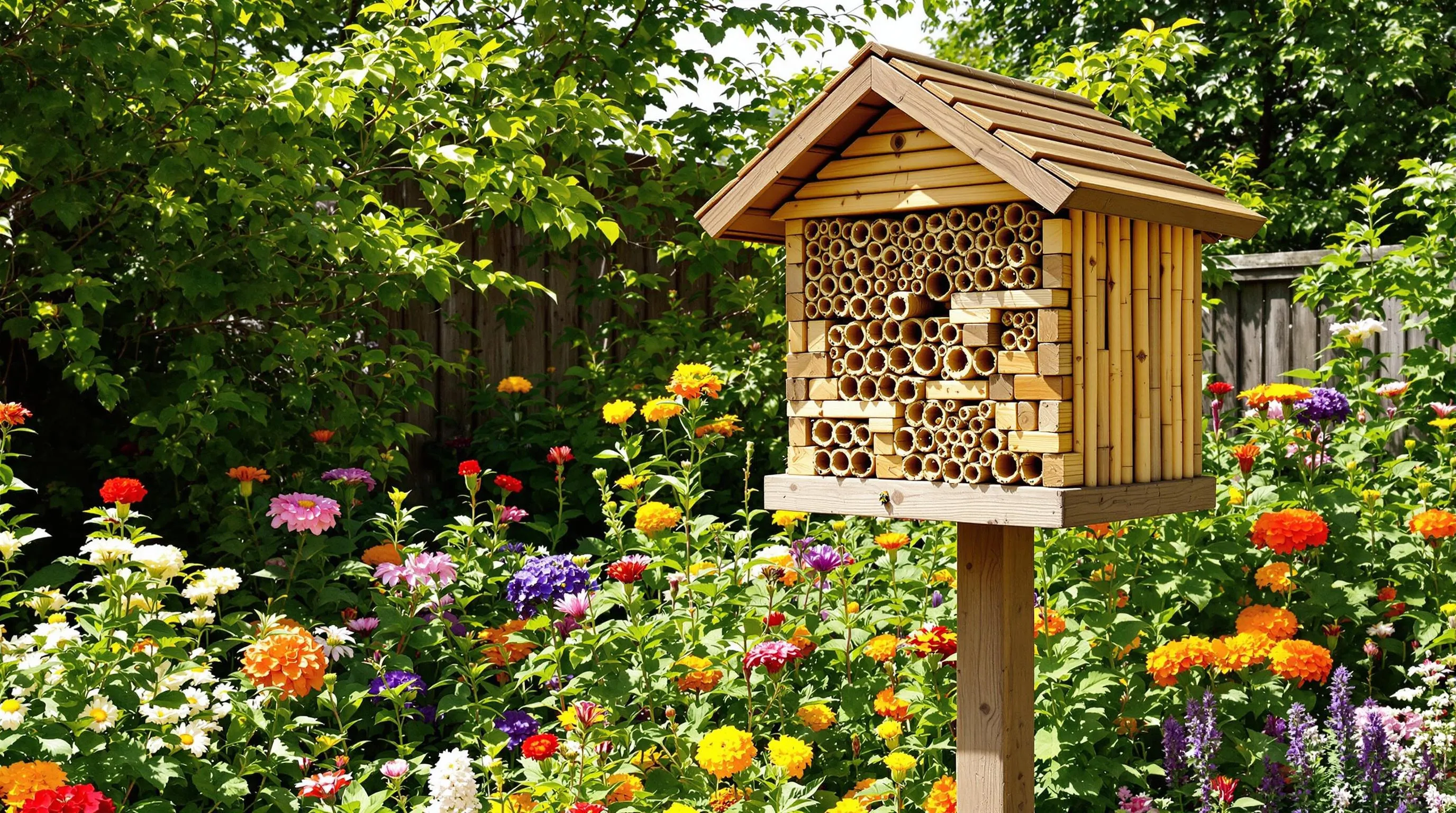
While honeybees live in colonies, about 90% of bee species are actually solitary and need individual nesting sites. Creating bee hotels provides essential habitat for these important pollinators who don’t have a hive to call home.
Natural Material Options for Bee Houses
The best bee hotels use materials these creatures would naturally seek out in the wild. Hollow bamboo stems (4-10mm in diameter) make perfect tubes for mason and leafcutter bees to nest in. Drill holes of varying sizes (2-10mm) into untreated wooden blocks to accommodate different bee species. Bundle dried hollow plant stems like reeds or sunflower stalks to create natural nesting tubes. Incorporate pinecones, bark pieces, and small twigs to create diverse nesting options that mimic natural habitats. For a low-maintenance option, simply leave a section of bare, undisturbed soil in your garden for ground-nesting bees who prefer to burrow.
Placement Tips for Maximum Bee Occupancy
Position your bee hotel in a sunny spot that receives 6-8 hours of direct sunlight daily, as most solitary bees prefer warmth. Mount the hotel at least 3-5 feet off the ground to protect it from moisture and predators. Face the entrance toward the east or southeast to catch morning sun and encourage early bee activity. Place hotels near your flowering plants (within 300 feet) to minimize travel distance for busy pollinators. Ensure the hotel is sheltered from heavy rain and strong winds by positioning it under a slight overhang. Avoid moving the hotel once established, as bees use landmarks to navigate back to their nesting sites.
Designing a Bee-Friendly Herb Garden

Herbs are powerhouse plants for attracting bees while serving double duty in your kitchen. Create a dedicated herb garden by selecting bee favorites like oregano, thyme, rosemary, mint, and borage—all of which produce nectar-rich flowers that bees can’t resist. Plant these herbs in a sunny location with well-draining soil, arranging taller varieties like rosemary at the back and spreading types like thyme along borders or between stepping stones. Group herbs with similar water needs together, and avoid using chemical pesticides that harm beneficial insects. Allow some herbs to flower rather than harvesting all the leaves, as the blossoms provide essential food for pollinators. For small spaces, consider a vertical herb garden using wall-mounted planters or a spiral design that creates multiple microclimates. Your herb garden will reward you with fresh culinary ingredients while providing bees with a consistent food source throughout the growing season.
Incorporating Native Plants for Local Bee Species
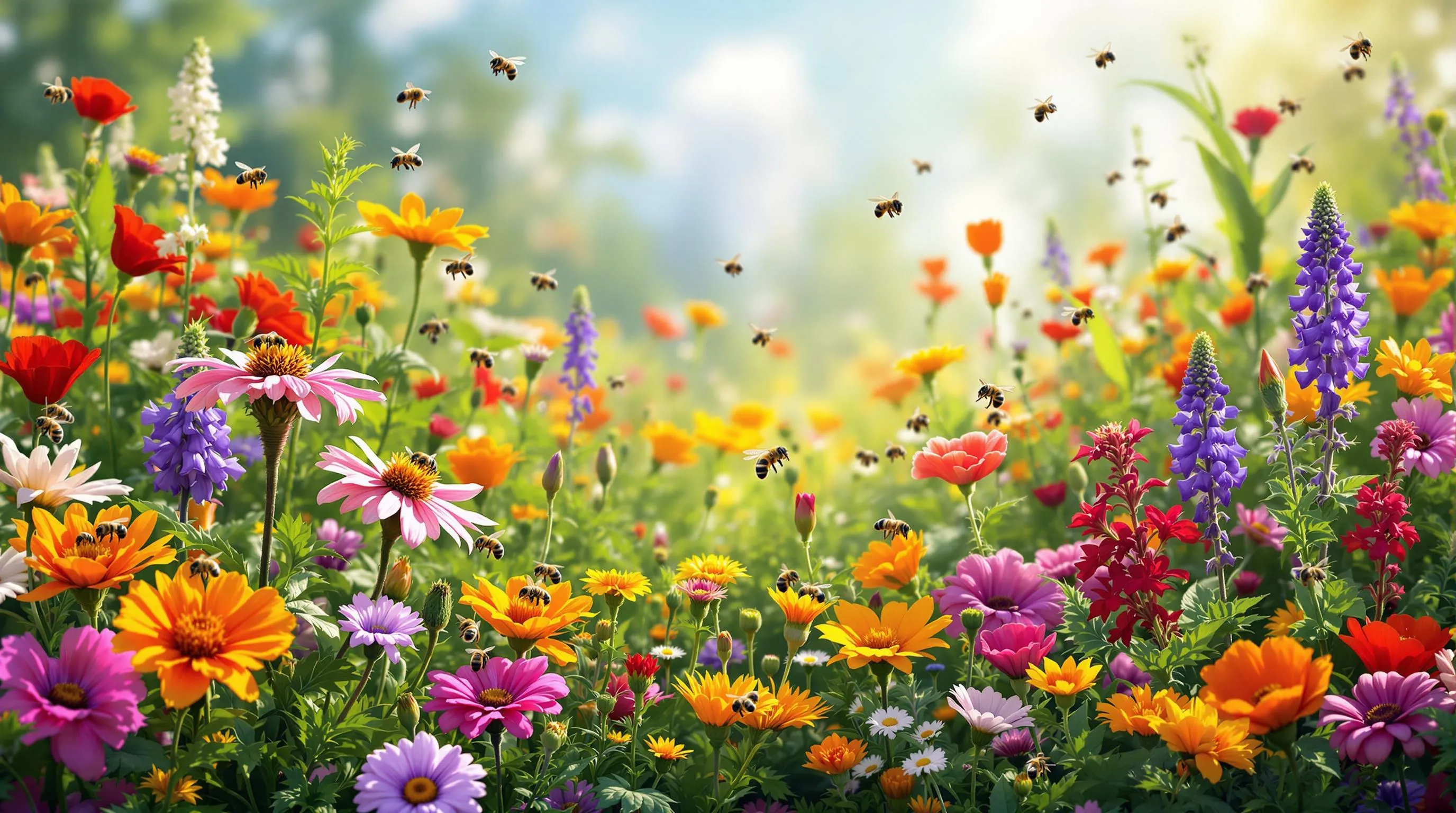
Native plants are the cornerstone of any successful bee garden, having co-evolved with local pollinators for thousands of years. These indigenous species provide up to 4 times more bee food than non-native alternatives and require 50% less water once established. Choose plants native to your exact region—like purple coneflower in the Midwest, California poppy in the West, or scarlet bee balm in the Northeast. Research shows native bees prefer these familiar plants, with some specialist bees only able to collect pollen from exact native species. Create plant clusters at least 3 feet in diameter rather than scattered individuals to make foraging more efficient for bees. Mix various flower shapes (tubular, flat, and bell-shaped) to accommodate different bee tongue lengths and feeding habits. For maximum impact, include at least 10 different native species in your garden, ensuring continuous blooms from early spring through late fall. This approach not only supports local bee populations but also preserves your region’s ecological heritage while reducing maintenance needs.
Planning a Year-Round Bee Buffet Garden
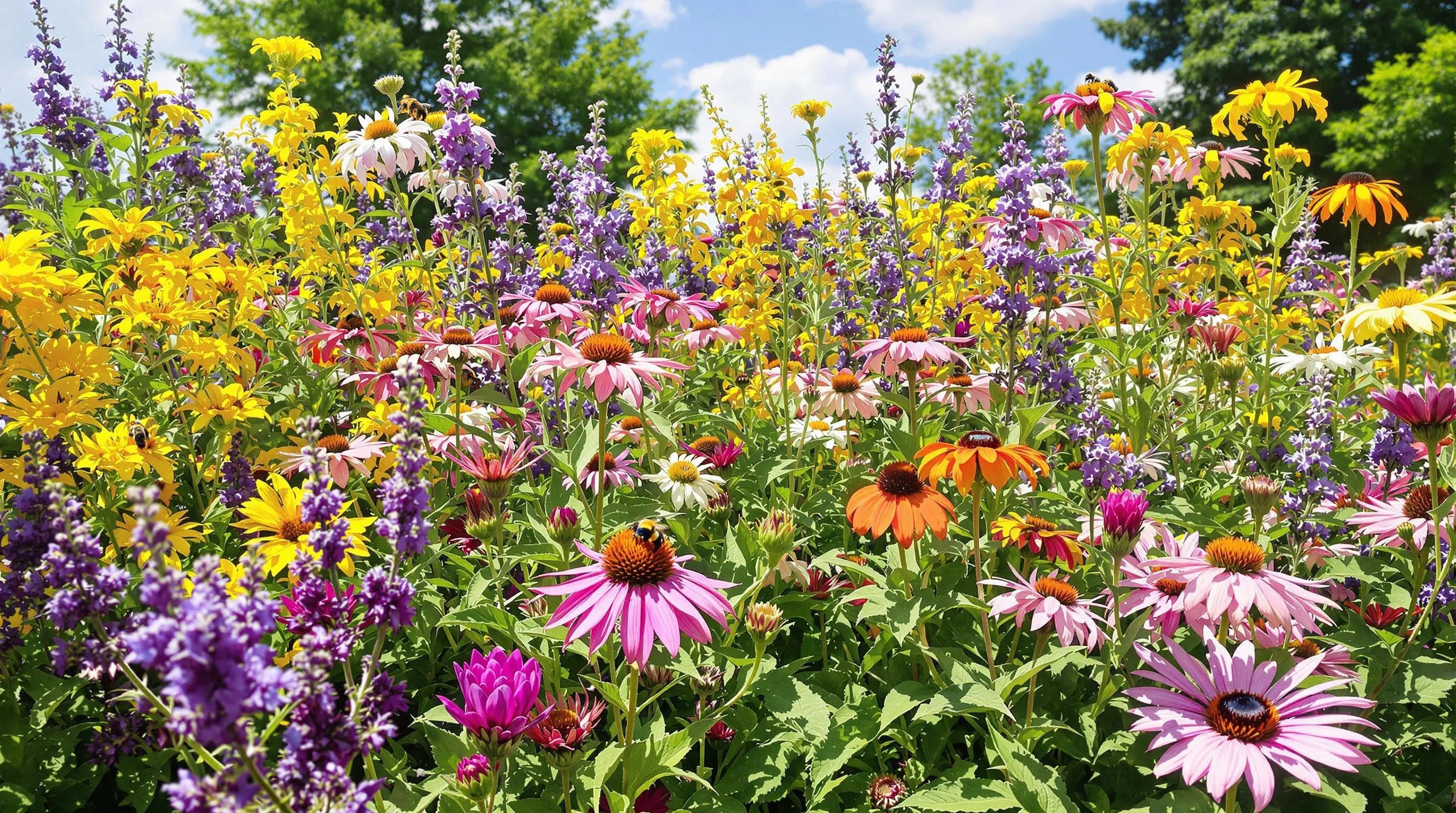
Creating a year-round bee buffet garden ensures pollinators have continuous access to food sources throughout the seasons. Start by mapping your garden’s bloom timeline, identifying gaps where flowers might be scarce. Include at least three early spring bloomers like crocus and hellebores to support bees emerging from winter hibernation. Add summer staples such as lavender, bee balm, and coneflower that provide abundant nectar during peak foraging months. Don’t forget late-season performers like goldenrod, asters, and sedum to help bees prepare for winter. Plant in drifts of at least three square feet of the same species to increase visibility to foraging bees. Layer your garden with different heights—ground covers, mid-height perennials, and taller plants—to maximize space and create diverse feeding zones. Remember to incorporate both nectar-rich flowers for energy and pollen-heavy varieties for protein, ensuring bees receive complete nutrition. By thoughtfully planning your planting schedule, you’ll create a continuous buffet that supports bee populations year-round while enjoying an ever-changing display of beautiful blooms.
Chemical-Free Gardening Practices to Protect Pollinators
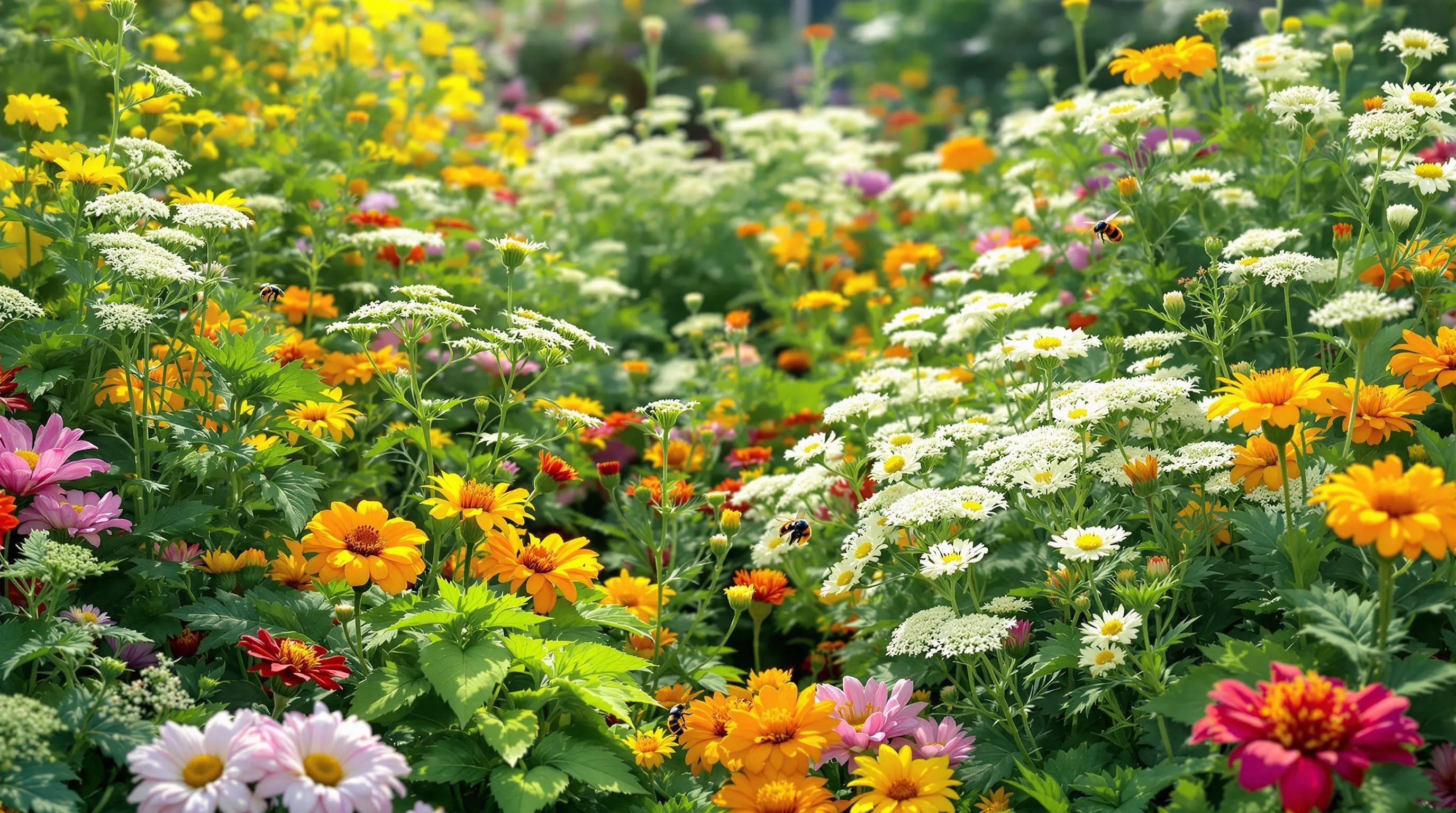
- Adopt Integrated Pest Management (IPM) techniques in your garden to control pests without harming bees. IPM focuses on prevention first, using physical barriers like row covers and introducing beneficial insects such as ladybugs and lacewings that prey on common garden pests. These natural predators can reduce aphid populations by up to 90% in a properly balanced garden network.
- Make your own natural pest deterrents using household ingredients instead of store-bought pesticides. A simple solution of 1 tablespoon of dish soap to 1 quart of water can effectively control soft-bodied insects like aphids and mealybugs without harming pollinators when applied directly to affected plants.
- Encourage beneficial insects by creating diverse habitats in your garden. Plant umbelliferous flowers like dill, fennel, and Queen Anne’s lace, which attract predatory wasps and flies that can eliminate caterpillars and other pest larvae while posing no threat to bees.
- Practice companion planting to naturally repel pests without chemicals. Interplant aromatic herbs like basil and marigolds with your vegetables to deter problematic insects. French marigolds, for example, release compounds that repel nematodes in the soil while still providing nectar for bees.
- Maintain healthy soil through regular addition of compost and organic matter. Plants grown in nutrient-rich soil with proper microbial activity are up to 60% more resistant to pest and disease problems, reducing the perceived need for chemical interventions.
- Time your gardening activities to minimize impact on pollinators. Perform any necessary manual pest control in the evening when bees are less active. Hand-picking larger pests like tomato hornworms during twilight hours can reduce pest populations by 75% without exposing pollinators to any harmful substances.
- Establish physical barriers for pest management rather than chemical answers. Use floating row covers during peak insect pressure periods and remove them when plants flower to allow pollinator access. This method can reduce pest damage by up to 85% while preserving beneficial insect populations.
- Embrace some plant damage as part of a healthy network. Gardens with minor pest damage (under 15%) typically maintain better ecological balance and don’t require intervention with chemicals that might harm pollinators.
Small Space Bee Garden Ideas for Balconies and Patios
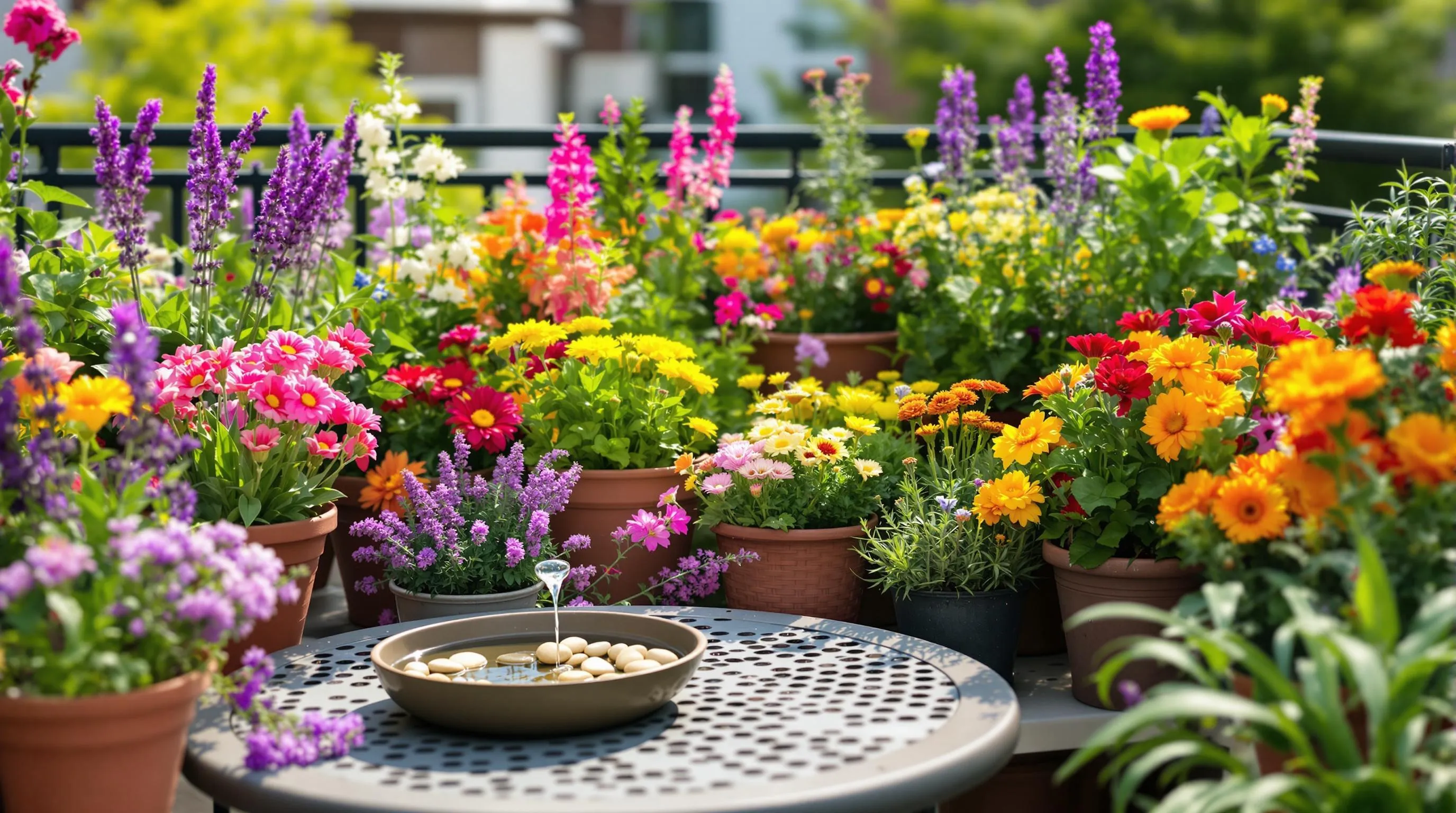
Limited outdoor space doesn’t mean you can’t create a bee paradise. Even small balconies and patios can become vibrant pollinator havens with these space-efficient ideas. Container gardening offers the perfect solution – use a mix of pots, railing planters, and hanging baskets to maximize vertical growing space. Choose compact, bee-friendly plants like dwarf lavender, compact oregano, and trailing thyme that thrive in containers while providing abundant nectar. Consider multi-tiered plant stands or ladder shelves to create different levels for your potted plants, instantly multiplying your growing area without expanding your footprint. Window boxes provide another excellent opportunity to grow bee favorites like sweet alyssum, compact varieties of salvia, and creeping thyme, bringing pollinators right to your windows. For the most efficient use of limited space, try vertical gardening with wall-mounted pocket planters or trellises for climbing plants like nasturtiums. Even tiny spaces can incorporate a small bee watering station using a shallow dish with pebbles on a side table. Remember to group plants with similar water and light requirements together to simplify care, and select varieties that bloom at different times to provide season-long sustenance for your buzzing visitors.
Creating Bee Corridors in Urban Environments
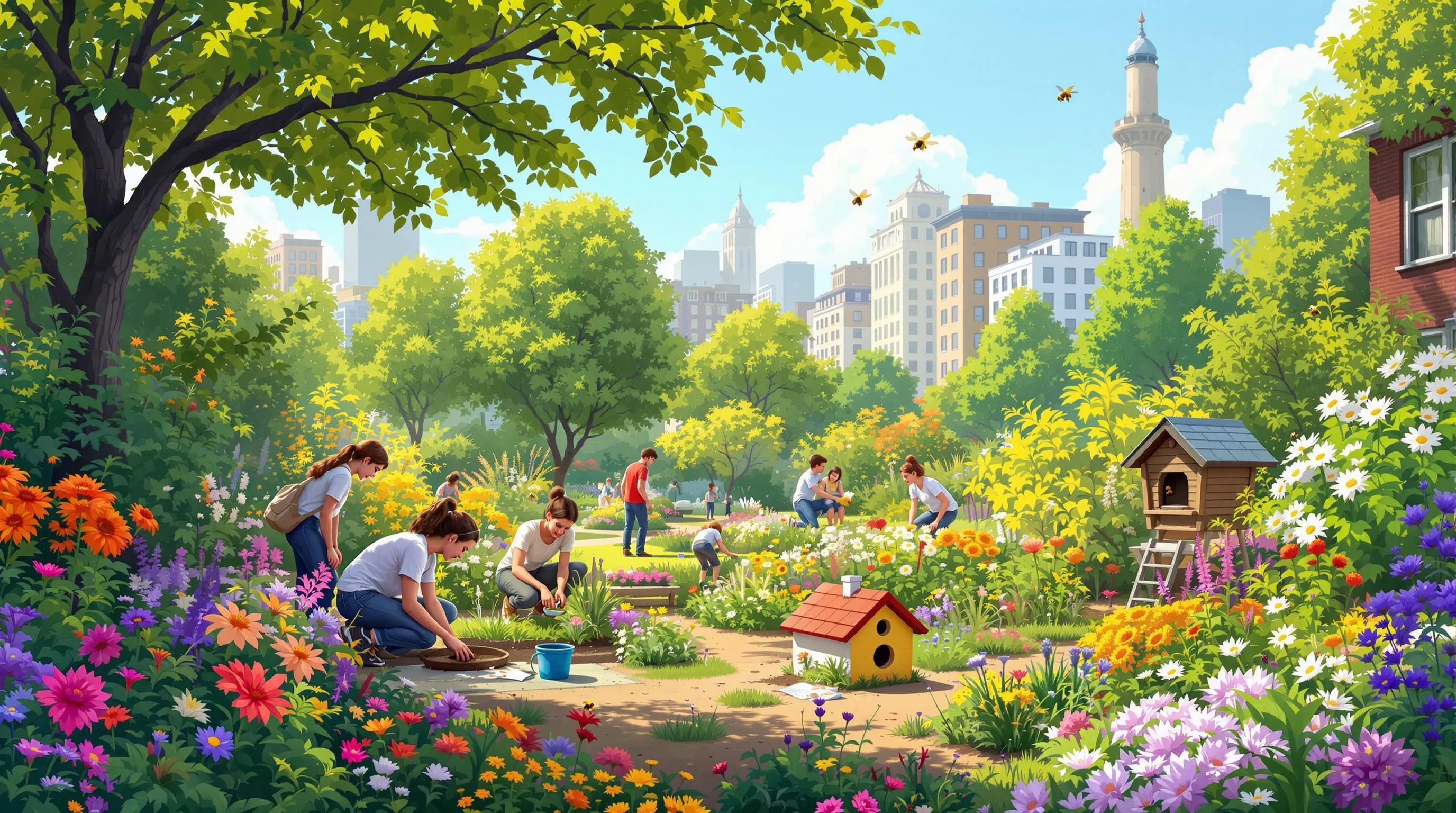
Urban bee corridors are strategic pathways of bee-friendly plants that connect green spaces across cities, allowing pollinators to travel safely between feeding areas. You can help establish these vital lifelines by coordinating with neighbors to plant pollinator-friendly species in adjacent yards, creating continuous “stepping stones” for bees. Contact local community gardens, schools, and businesses to expand the network beyond residential areas. Choose native flowering plants that bloom in succession throughout the growing season to ensure constant food sources along the corridor. Install small bee watering stations and insect hotels at regular intervals to provide necessary hydration and shelter. Advocate for bee-friendly practices in public spaces by petitioning local authorities to incorporate native plantings in parks, roadside verges, and municipal properties. Even converting small patches of lawn or unused urban spaces into wildflower meadows can create crucial links in your neighborhood’s bee corridor. By connecting these individual pollinator-friendly spaces, you’ll help combat habitat fragmentation and create a thriving network for bees throughout your urban environment.
Conclusion: Harvesting the Benefits of Your Bee Garden
Your bee-friendly garden is more than just a beautiful outdoor space—it’s a vital sanctuary for our struggling pollinators. By incorporating native plants blooming in succession throughout the seasons you’re creating a sustainable network right outside your door.
Whether you’ve transformed a spacious backyard small balcony or joined forces with neighbors to create urban bee corridors your efforts make a genuine difference. The chemical-free practices watering stations and shelter options you’ve implemented provide essential support for diverse bee species.
Remember that your garden evolves with each season offering new opportunities to refine and expand your pollinator paradise. As your plants flourish and bees buzz from bloom to bloom you’ll witness firsthand the powerful impact of your conservation efforts—proving that even the smallest gardens can yield tremendous environmental benefits.





